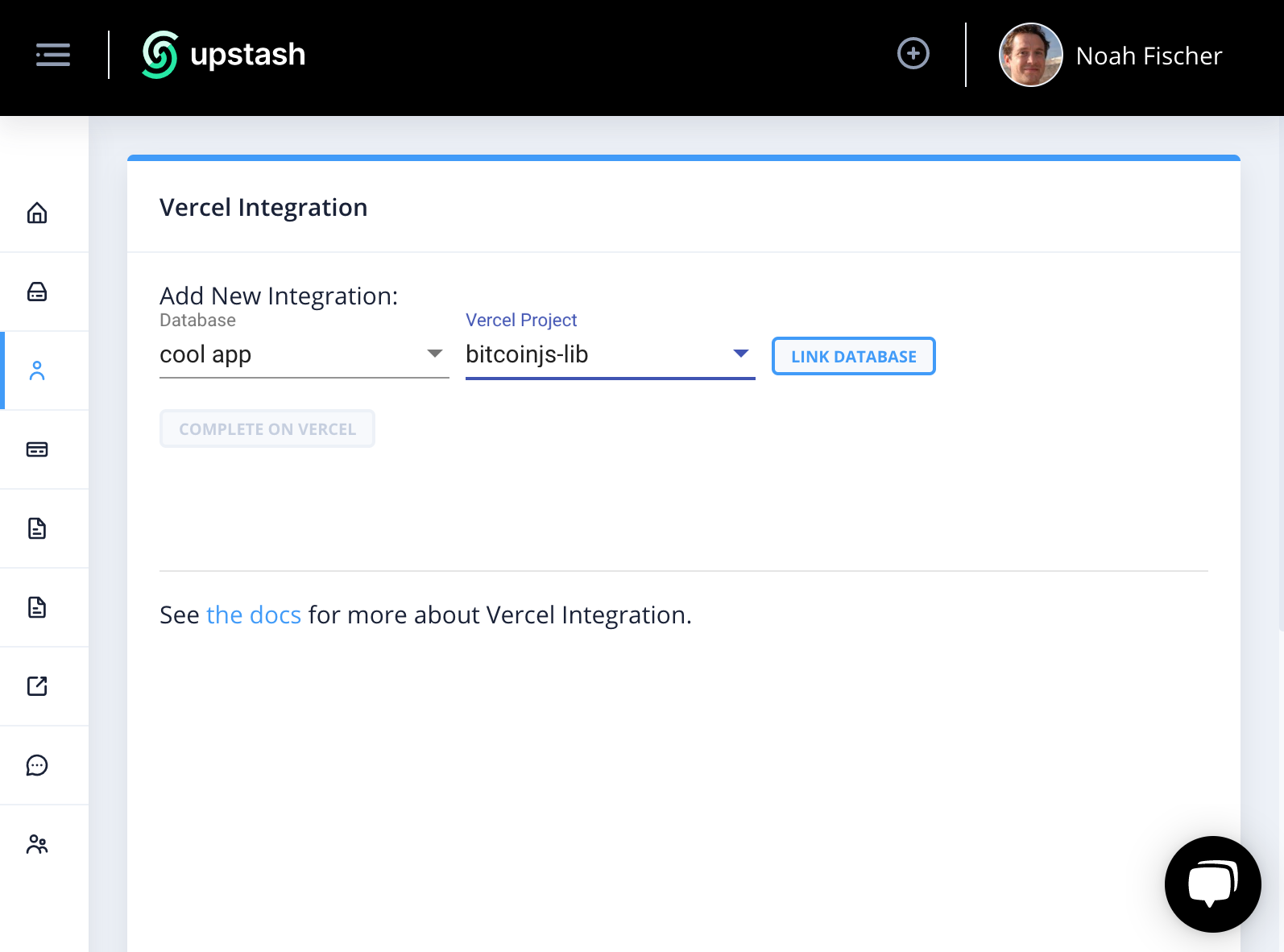Vercel Integration
If you are using Vercel then you can integrate Upstash to your project easily. We believe Upstash is the perfect database for your applications thanks to its:
- Low latency data
- Per request pricing with monthly cap
- Durable storage
- Ease of use
Below are the steps of the integration.
Add Integration to Your Vercel Account#
Visit Vercel Upstash Integration webpage and Click the Add button. Choose your scope and application that you want to integrate.
Link Database#
Vercel will show you a popup window where you can sign in Upstash. Then you can create a database if you not have one.

Once you have a database, you will see the page where you can map a Upstash database to a Vercel app. After selecting the database and project, click on `Link Database`.

Now click on Complete on Vercel, so the popup window will be closed and you will be forwarded to your Vercel page.

If you browse to your_application/settings/environment-variables in Vercel dashboard, you will see the REDIS_URL has been set as environment variable.

You need to redeploy your app for the Environment Variable to be effective.
Create Your Redis Client#
If you completed the integration steps above and redeploy your app; the REDIS_URL environment variable will be accesible inside your Vercel application. You can create your client as below:
const Redis = require("ioredis");
module.exports = async(req, res) => {
let client = new Redis(process.env.REDIS_URL); await client.set('foo', 'bar'); let x = await client.get('foo');
res.json({ body: JSON.stringify("foo " + x) })}
Support#
If you have any issue you can ask in our Discord server or send email at support@upstash.com